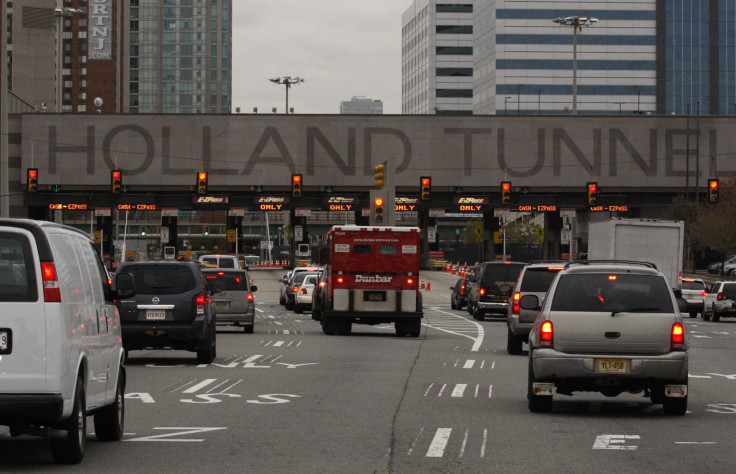Hurricane Sandy Two Years Later: Amid New Evacuation Routes, New Yorkers Still Question The City's Preparedness

Longtime New York City resident Pat Singer sat in her Brighton Beach home in total darkness. There was no electricity or heat. Cars floated down streets, windows were smashed, subway tunnels were flooded, banks and government buildings were closed, boats were stranded in the road, cellphone towers were down, loose furniture and kitchen appliances had crashed through buildings, and there was sand everywhere. “We were trapped,” Singer said recently, recalling the destruction Hurricane Sandy wrought on New York City in 2012.
Two years later, after the second-costliest storm in United States history barreled up the Atlantic Coast, leveling homes and flooding subway tunnels, New York City officials said they have updated the limited evacuation routes that left many New Yorkers stranded in their homes without heat or electricity after Hurricane Sandy. The new, widened evacuation zones were designed to better serve the 3 million New Yorkers who inhabit the city's coastal area and give city officials more flexibility in targeting areas to evacuate before a storm, said Jim McConnell, assistant commissioner for strategic data at the New York City Office of Emergency Management.
But some Sandy survivors said they still have doubts that the city will do a better job of getting people out of their homes in the face of another emergency. The new evacuation zones, labeled Zones 1 through 6, only cover an additional 640,000 New Yorkers who were previously excluded. In all, 1.1 million out of more than 3 million New York City households are included in the updated plan, according to the latest data from the U.S. Census Bureau. “What if we can’t get out?” said Singer, founder of the Brighton Beach Neighborhood Association. “This could happen again tomorrow and this community would be destroyed completely.”
Hurricane Sandy was the most destructive Atlantic hurricane since 1972 and the largest ever recorded. The greatest storm surges and flooding occurred in and around the New York City metropolitan area, causing historic wreckage, according to a report from the National Oceanic and Atmospheric Administration. Since touching down in southern New Jersey on Oct. 29, the post-tropical cyclone impacted 24 states, with devastation stretching as far west as Wisconsin and damaging or destroying at least 650,000 houses in the country. In New York City, 600 million gallons of water inundated inter-city roads, airport runways and subway tunnels, and over 2 million cubic yards of debris swallowed streets, sidewalks and private properties. Hurricane Sandy’s salt-water surge cut power for 700,000 New Yorkers and 8.5 million people in total.
Until 2013, New York City had three evacuation zones—Zones A, B and C—based on data from a 2003 model of the city’s underlying elevation determined by the NOAA. McConnell said his team was preparing to revise the city’s evacuation zones the day Sandy hit. Under the new plans, 37 percent of all New York City homes are located within evacuation zones, including an additional 26 Housing Authority developments, four hospitals and nine nursing homes. Nancy Silvestri, spokesperson for the city’s Office of Emergency Management, said there are two evacuation plans. The first would order evacuations of health care facilities. A broader plan would oversee the evacuation of the general population.
In July 2013, nearly nine months after Hurricane Sandy made landfall in the northeast, 1.4 million New York City households and businesses in the new evacuation zones received a copy of an updated hurricane preparedness guide from City Hall that included a citywide map of coastal evacuation zones and evacuation centers, as well as advice on how New Yorkers should prepare for storms. The new hurricane brochure was in addition to the city's "extensive education outreach" to inform the public of the risk that coastal storms present and how to best prepare for emergencies, according to city leaders.
Even under the updated plan, it's unclear if city officials can persuade New Yorkers, many of whom depend on public transportation, to leave their homes. A 2013 report from the Bloomberg administration showed 70 percent of those surveyed in a mandatory evacuation zone chose not to vacate their homes after Hurricane Sandy had passed.
Singer, 74, said former New York City Mayor Michael Bloomberg advised evacuation for the Brighton Beach area, where she’s lived for 50 years, but failed to communicate urgency, even after the storm hit. “Nobody was around. We had no instructions,” she said. As a result, many Brighton Beach residents like Singer did not evacuate. “We weren’t told anything,” Singer said. “It was the scariest night of my life. I had never seen anything like it.”
The same issue proved true for many World Trade Center evacuees after the 9/11 terrorist attacks. A study published by New York University in 2011 that surveyed 1,444 persons who survived the WTC attacks found one-half of evacuees did not leave quickly. Of those, 28 percent said they “didn’t know where to go” and 15 percent said they “were not given directions” when evacuating. “Such communication is important to overcome what is common in some circumstances – denial of the threat,” according to the researchers.
During Sandy, some people stayed home because they weren't told otherwise. “We hadn’t planned on the hurricane being that bad,” said Jasmine Chang, a fashion consultant and single mother who lives with her two daughters in the West Village near the Hudson River. Although there was no damage to her apartment, Chang said units on the lower level were “ruined.” Her household was not asked to evacuate because their apartment building was located just outside the evacuation zone at the time.
After the storm passed, Chang, 54, decided to stay with a cousin in uptown Manhattan because her building lost power for seven days. “We hadn’t stocked up on food, and restaurants without power couldn’t really deliver food either,” she said. The new evacuation zones now include Chang’s residence.
Bloomberg’s decision not to evacuate health care and senior facilities within the mandatory evacuation area during Hurricane Sandy also raised eyebrows. An investigation by the New York Times found Sandy’s impact was worsened by not making sure these facilities were prepared to, literally, weather the storm.
“They did not require that nursing homes maintain backup generators that could withstand flooding. They did not ensure that health care administrators could adequately communicate with government agencies during and after a storm. And they discounted the more severe of the early predictions about Hurricane Sandy’s surge,” according to the New York Times investigation in 2012.
Singer, a widow and a mother of two, said she is worried the new evacuation zones and brochures won't be enough when the next big storm hits. “We’re tough, especially New Yorkers, but you got to help us too,” she said.
© Copyright IBTimes 2024. All rights reserved.





















